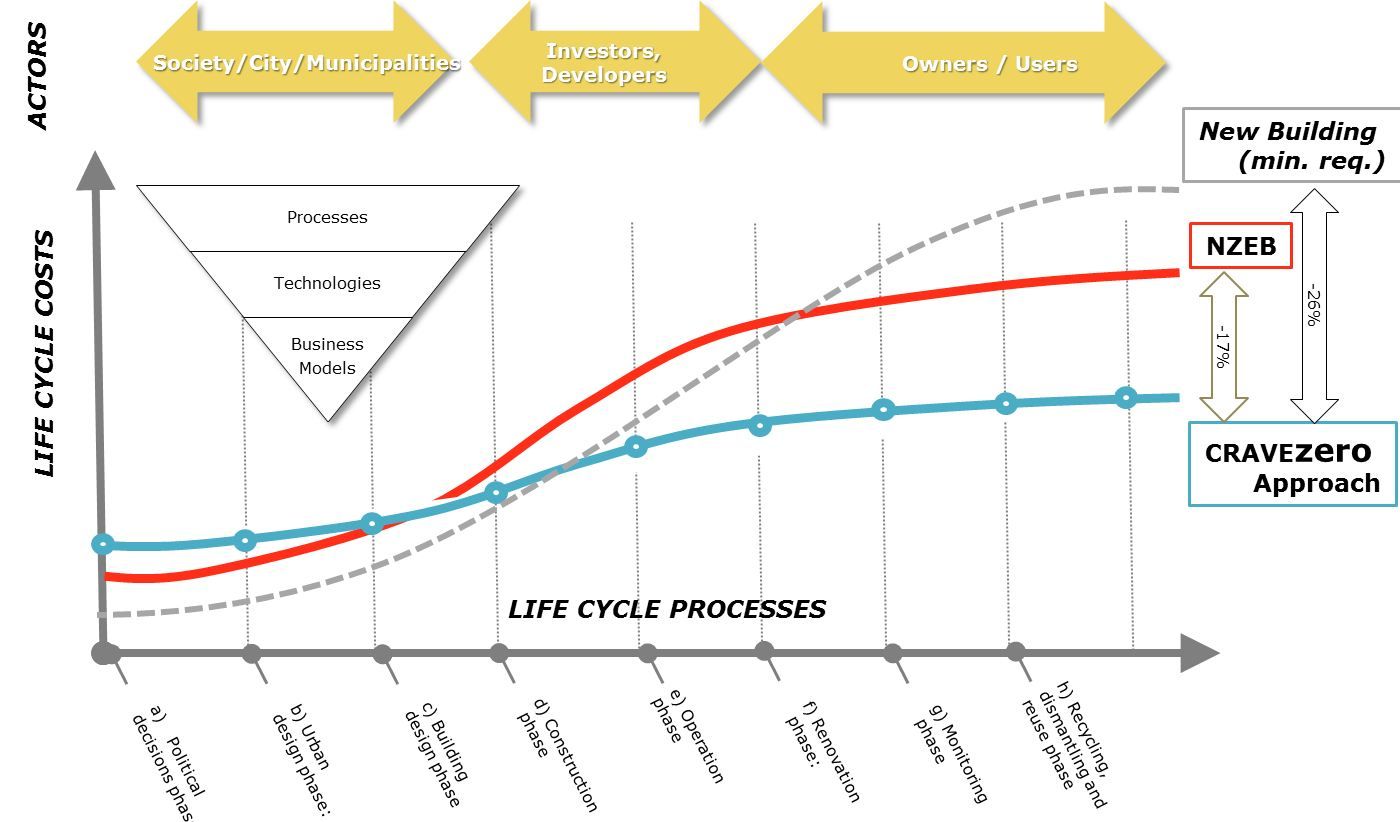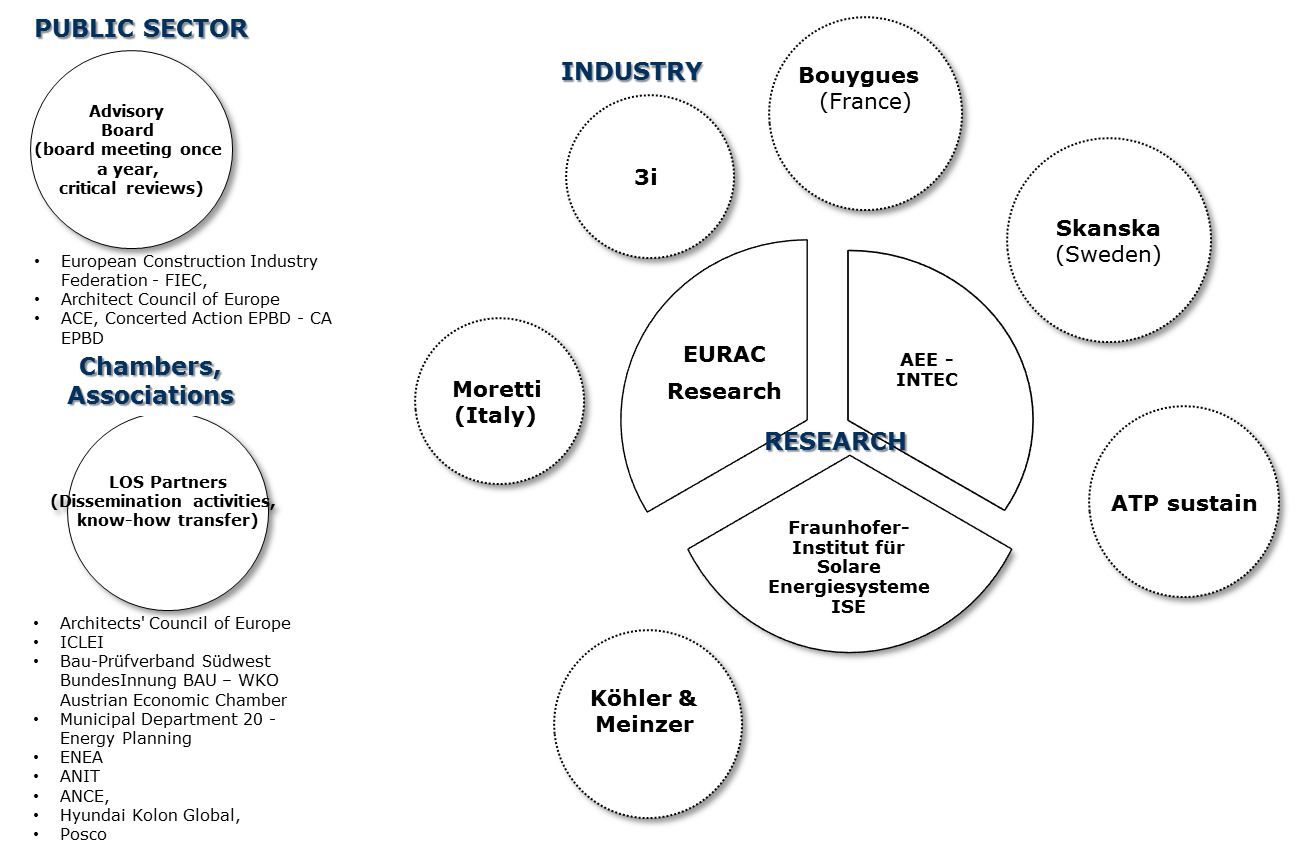| Duration: | 09/2017 - 08/2020 |
| Contracting Authority/ Sponsors: | European Commission, Horizon 2020 The EU Framework Programme for Research and Innovation |
| Project Partners: | Arbeitsgemeinschaft - Erneuerbare Energie - Institut für Nachhaltige Technologien (AEE INTEC), Accademia Europea di Bolzano - Institute for Renewable Energy (EURAC), Bouygues Construction, Skanska Sverige AB, 3i efficientamento energetico s.r.l., ATP sustain GmbH, Moretti spa, Köhler&Meinzer GmbH |
| Website: | www.cravezero.eu |
| Project Focus: |
CRAVEzero – Cost Reduction and Market Acceleration for Viable Nearly Zero-Energy Buildings


Cost optimal and nearly zero energy performance levels are principles initiated by the European Union’s (EU) Energy Performance of Buildings Directive, which was recast in 2010. These will be major drivers in the construction sector in the next few years, because all new buildings in the EU from 2021 onwards are expected to be nearly zero energy buildings (NZEBs).
While realized NZEBs have clearly shown that the nearly-zero energy target could be achieved using existing technologies and practices, most experts agree that a broad scale shift towards nearly-zero energy buildings require significant adjustments to prevailing building market structures. Cost-effective integration of efficient solution sets and renewable energy systems, in a form that fits with the development, manufacturing and construction industry processes, as well as with planning, design, and procurement procedures, are the major challenges.
CRAVEzero will focus on proven and new approaches to cost reduction of Nearly Zero Energy Buildings (NZEBs) at all stages of the life cycle. The main goal is to identify and eliminate the extra-costs for NZEBs related to processes, technologies, building operation, and to promote innovative business models taking into account the cost-effectiveness for all the stakeholders.
Main project pillars will be: (i) CRAVEzero pinboard as a structured framework organizing all needed information and data to build an effective low life cycle cost NZEB business model (ii) reliable lifecycle cost databases with cost reduction potentials in processes and technologies (iii) methodologies, robust solutions and business models for low LCC NZEBs. Costs reduction will indeed cover all stages of the process, from urban planning, to building design, construction, until the building operation, while ensuring high building overall quality, considering in particular architecture and indoor environmental.
CRAVEzero will transform the whole construction cycle (from the design to the end of life) into an organized process, where the building will acquire the features of a manufacturing product cutting off the uncertainties and failures during planning-construction-operation of the current practice, and reducing the associated costs. Guidelines, databases and case studies for cost reduction of NZEB technologies, processes and business models will be developed in close cooperation with the involved industry partners. Working methodologies, ready-to-be-used customisable solutions enabling the cost reduction, speeding up the process and ensuring the high performance level of the new buildings, will be addressed. Nevertheless, the NZEB promoted by CRAVEzero is not a unique model to be simply duplicated, but it is composed by a set of customisable solutions to be combined according to the local context and the needs of the users, ensuring the high quality of the built environment, preserving the identity of each single building, increasing user acceptance and keeping high real estate value. Highly replicable models will be developed, to lower design and construction costs, avoiding delays, optimising and making easier the management of development, construction and operational phase minimising errors and failures.